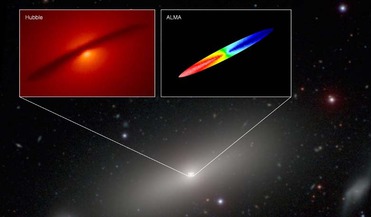 06 May 2016
Accurate mass of supermassive black hole calculated by astronomers using ALMA
06 May 2016
Accurate mass of supermassive black hole calculated by astronomers using ALMA
Using the Atacama Large Millimeter/submillimeter Array (ALMA), a team of astronomers has ...with the most powerful telescopes on Earth or in space," said Barth. "ALMA has the revolutionary ability to observe disks of cold gas around supermassive black...
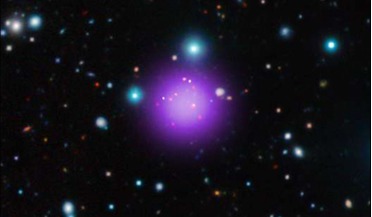 31 August 2016
Record-breaking galaxy cluster discovered
31 August 2016
Record-breaking galaxy cluster discovered
..., the NSF's Karl G. Jansky Very Large Array, the Atacama Large Millimeter/submillimeter Array (ALMA), the Institut de Radioastronomie Millimetrique Northern Extended Millimeter Array (IRAM NOEMA), and ESO's Very Large Telescope. Speaking about the...
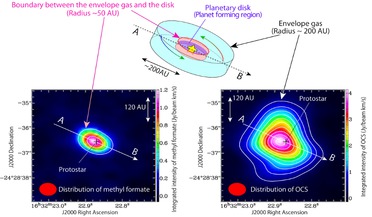 29 June 2016
Researchers detect interstellar organic materials being fed into a young planetary system
29 June 2016
Researchers detect interstellar organic materials being fed into a young planetary system
...the high spatial resolution capabilities of the Atacama Large Millimeter/submillimeter Array (ALMA), an international team led by Yoko ... telescope observations. Now, with telescopes such as ALMA it has been possible to show these organic molecules...
 25 September 2020
Salty water vapour provides clues to massive star formation
25 September 2020
Salty water vapour provides clues to massive star formation
... massive star formation. 9500 light-years away in the constellation Scorpius, astronomers using the Atacama Large Millimeter/submillimeter Array (ALMA) have spotted a pair of massive stars growing in a swirling cloud of heated water vapour and sodium...
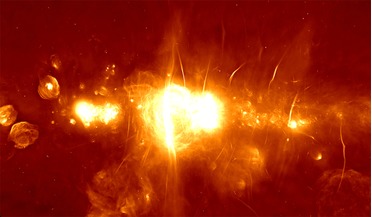 16 July 2018
Science begins with South Africa's super radio telescope
16 July 2018
Science begins with South Africa's super radio telescope
... area of approximately one square kilometre (or 1 million square metres). For comparison, the Atacama Large Millimeter/submillimeter Array (ALMA) in Chile, which is already revolutionising areas of astronomy, has around 66 operational antennas and...
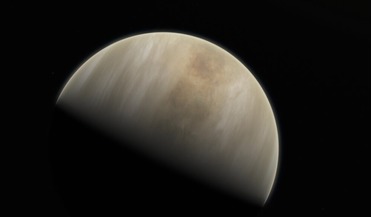 14 July 2021
Phosphine gas on Venus points to volcanism not life, study says
14 July 2021
Phosphine gas on Venus points to volcanism not life, study says
...-wavelength James Clerk Maxwell Telescope atop Mauna Kea in Hawaii, and the Atacama Large Millimeter/submillimeter Array (ALMA) in northern Chile, the pair say that phosphides, bound in metals such as iron, are finding their way to ...